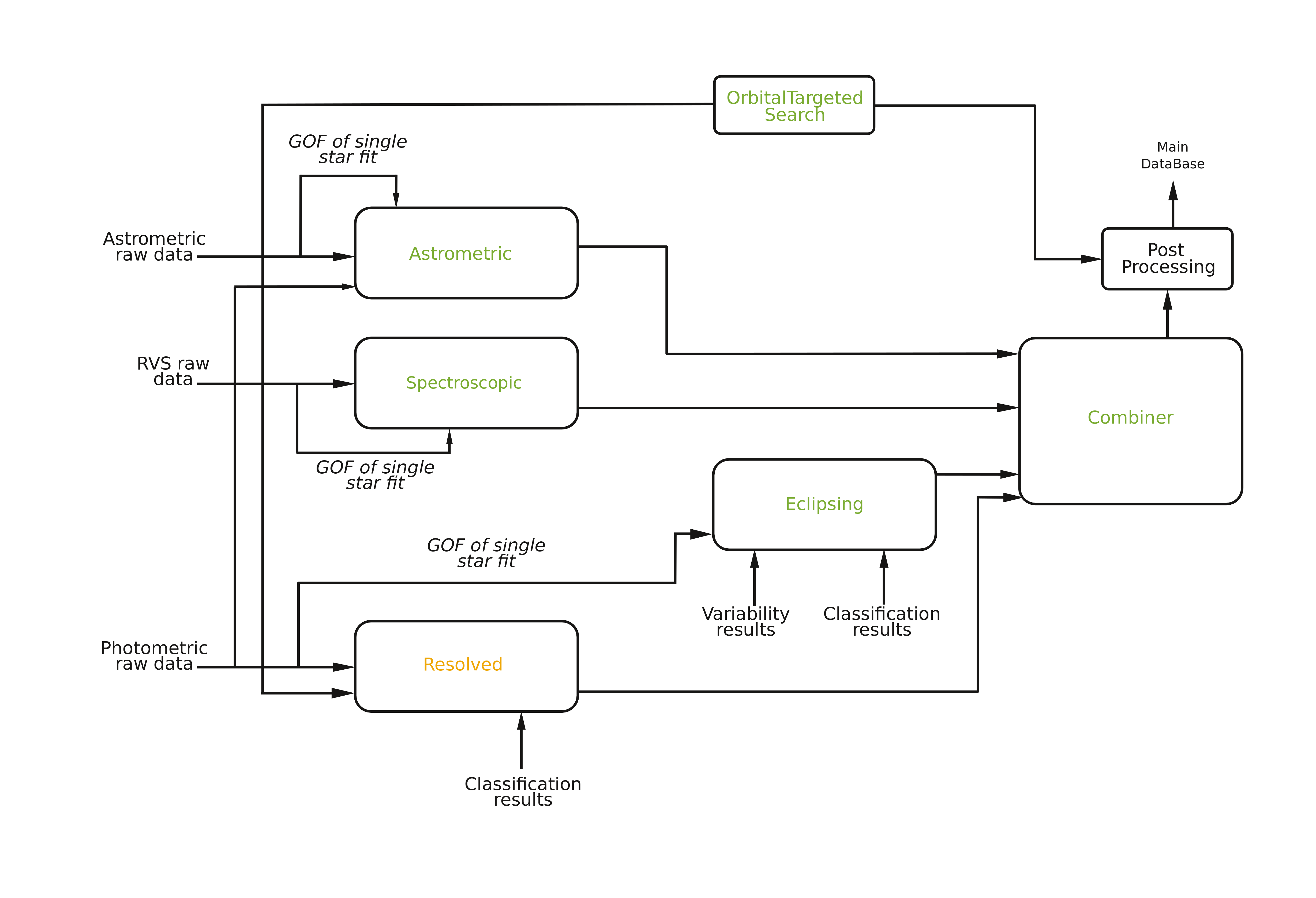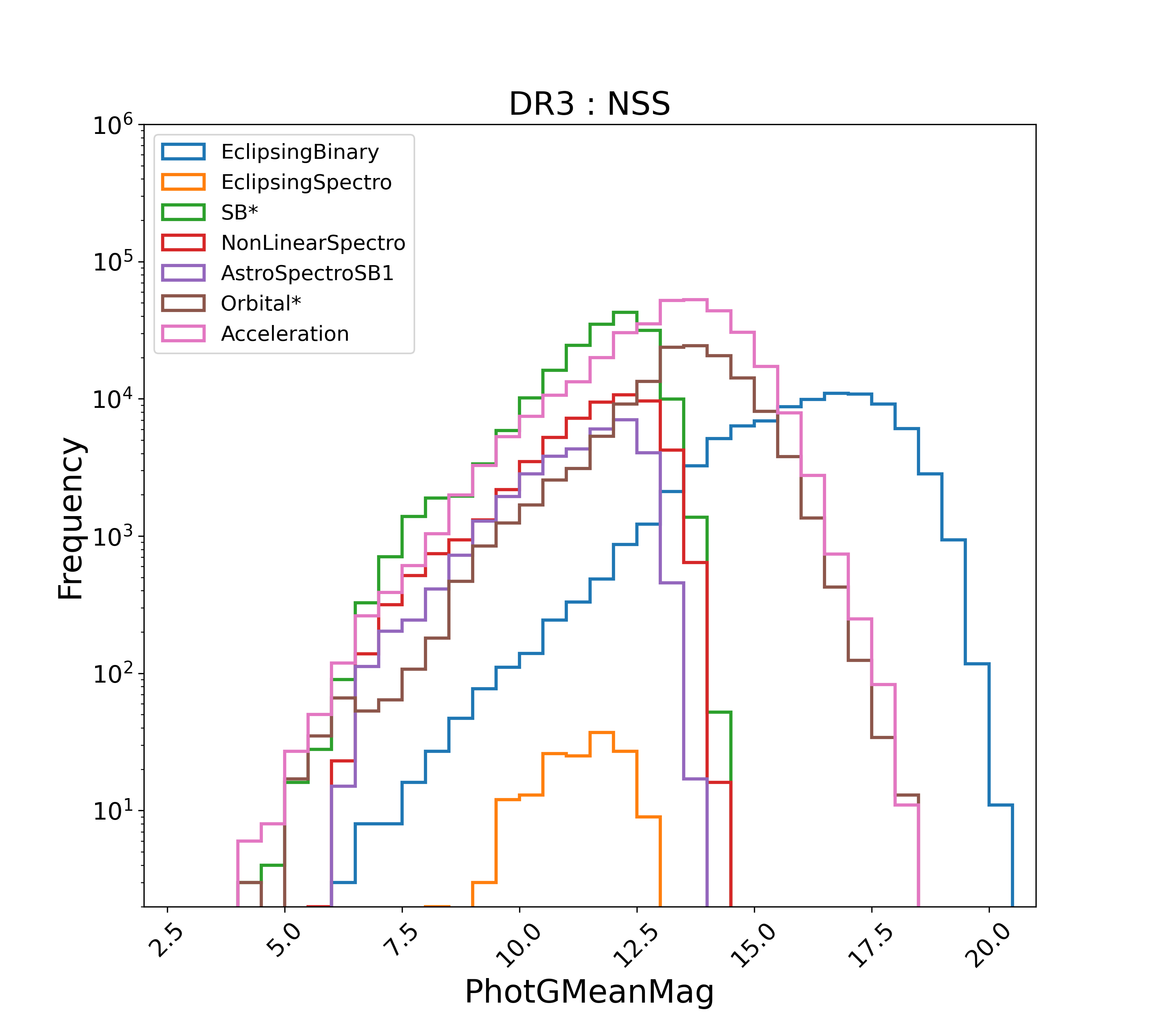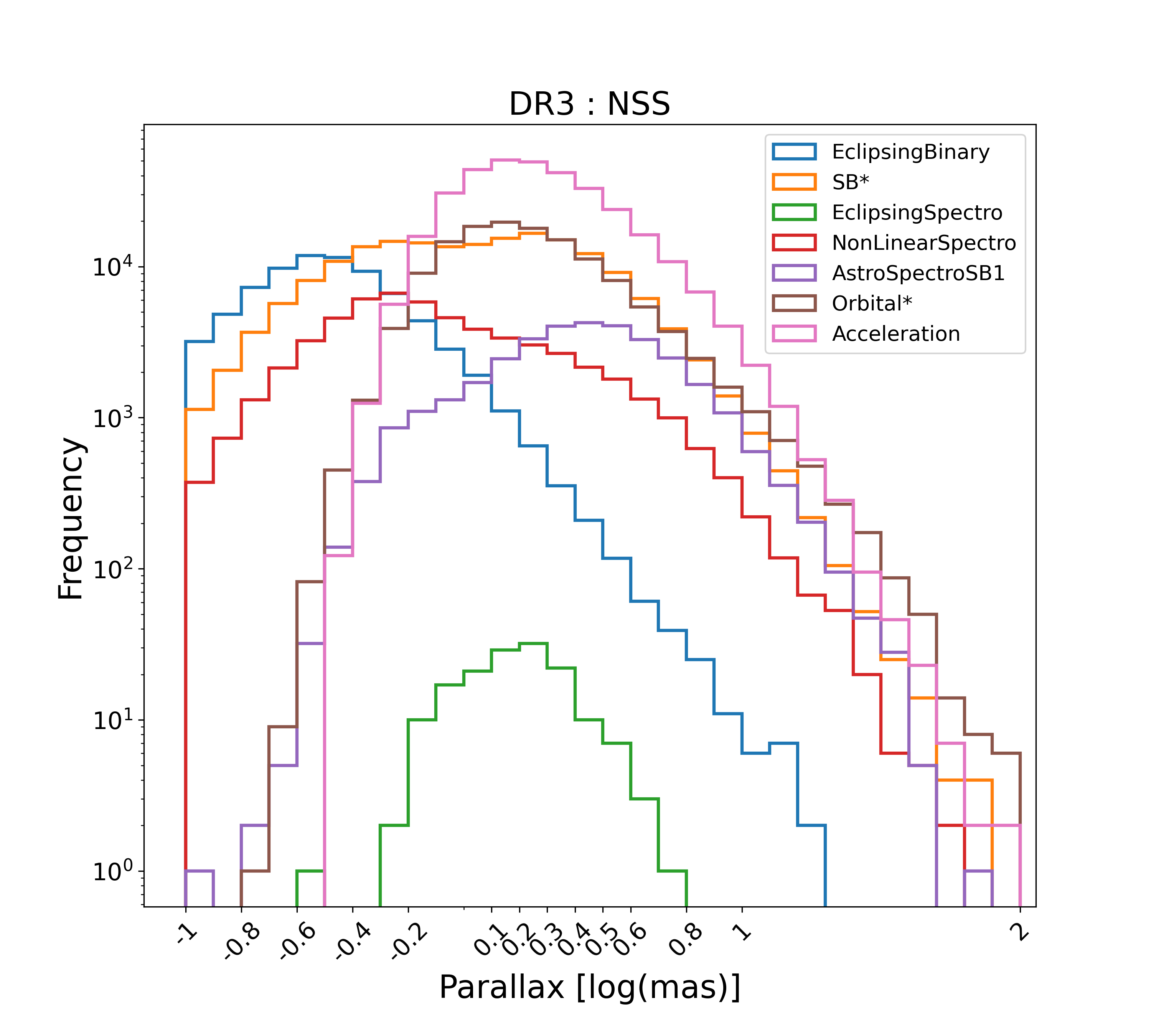7.1.1 Overview
Gaia can be considered like a complete observatory in orbit, with astrometric, photometric, and spectroscopic instruments. Consequently, it has in principle the capability to detect astrometric, spectroscopic or photometric (eclipsing) binaries thanks to the large number of observation epochs.
The basic Non-Single Stars (NSS) processing scheme is outlined Figure 7.1: sources for which the observations are considered as non-constant in one of the three channels trigger the test of various binary orbit models, as described in the following sections. A NSS solution has been kept when both significant and with an acceptable fit quality. It may then happen that binarity is detected in several instruments and the orbital parameters considered as consistent, in which case a combination is attempted, so as to improve the precision of the orbital parameters (Section 7.7).
As several instrumental problems may conspire to produce false detections, purity has been preferred over completeness. Consequently, a dedicated astrometric run has also been performed for a list of sources where the presence of a stellar or substellar companion was already suspected in the literature (Section 7.3). A post-processing step filtered out solutions which appeared spurious after the final validation of the solutions.
For Gaia DR3, the handling of resolved binaries was not yet possible, so that only unresolved binaries have been considered in this data release. The various types of solutions that have been produced for the three instruments are distributed in four different tables: nss_two_body_orbit when the full orbital motion is known, nss_acceleration_astro and nss_non_linear_spectro when a trend is known only, and nss_vim_fl for variable fixed binaries. From the very short periods to the longest ones, Table 7.1 describes the various models which are present in the published tables and the sections below where they are documented, while Figure 7.2 shows their magnitude and parallax distribution. It may be useful to point out that the NSS solutions expect to improve, and thus supersede, the original solutions, e.g. parallaxes for astrometric binaries or systemic velocity for spectroscopic binaries.

| solution type | table name | binary type | Section |
| EclipsingBinary | nss_two_body_orbit | eclipsing | 7.6 |
| EclipsingSpectro | nss_two_body_orbit | eclipsing + spectroscopic | 7.7 |
| SB1C | nss_two_body_orbit | spectroscopic | 7.4, 7.4.4 |
| SB2C | nss_two_body_orbit | spectroscopic | 7.5 |
| SB1 | nss_two_body_orbit | spectroscopic | 7.4, 7.4.4 |
| SB2 | nss_two_body_orbit | spectroscopic | 7.5 |
| AstroSpectroSB1 | nss_two_body_orbit | astrometric + spectroscopic | 7.7 |
| SecondDegreeTrendSB1 | nss_non_linear_spectro | spectroscopic | 7.4, 7.4.4 |
| FirstDegreeTrendSB1 | nss_non_linear_spectro | spectroscopic | 7.4, 7.4.4 |
| Orbital | nss_two_body_orbit | astrometric | 7.2.5 |
| OrbitalAlternative[Validated] | nss_two_body_orbit | astrometric | 7.3 |
| OrbitalTargetedSearch[Validated] | nss_two_body_orbit | astrometric | 7.3 |
| Acceleration9 | nss_acceleration_astro | astrometric | 7.2.4 |
| Acceleration7 | nss_acceleration_astro | astrometric | 7.2.4 |
| VIMF | nss_vim_fl | astrometric | 7.2.6 |

